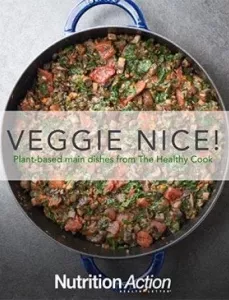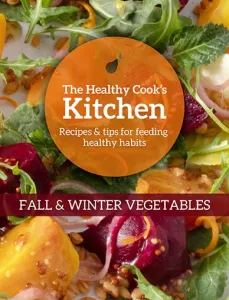How to order a healthy takeout meal from any restaurant

KhaizanGraphic - stock.adobe.com.
If you want a healthy takeout meal, whether you’re in the mood for a Thai curry or Chinese stir-fry, what—and how—you order matters. Here’s our cuisine-by-cuisine guide to healthier menu items and takeout tweaks.
Click to jump to a cuisine:
- Thai food
- Indian food
- Chinese food
- Pizza
- Salads
- Fast-casual bowls
- Middle Eastern or Greek food
- Mexican food
This article comes from Nutrition Action. We don't accept any paid advertising or corporate or government donations. Any menu items we recommend have been vetted by our staff and are not advertisements by the companies. They’re just healthy foods we think you’d like to know about!
How to order healthy takeout from any kind of restaurant
- Choose one starch (or none). The default at many restaurants is double refined carbs. Think burger buns & fries, chips & tortillas, pasta & bread, or pita & rice. Solution: Pick your favorite. (Bonus points if it’s a whole grain!)
- Replace red meat. Get beans, tofu, poultry, or seafood instead of beef, lamb, or pork.
- Pump up the veggies. Add a salad or some veggies from the menu’s sides...or save a few bucks and use up what’s about to wilt in your fridge. Sauté or steam some broccoli, spinach, etc., while you wait for the delivery person. If your order is a stir-fry or curry, you might wind up with enough sauce to toss everything together.
- Mind the sodium. Nearly all restaurant food is too salty. Adding more vegetables bumps up the potassium...and eating a potassium-rich diet can help counter sodium’s blood pressure damage. It also stretches your meal into more (lower-sodium) portions.
- Save half for later. When researchers analyzed takeout from non-chain restaurants in Boston in 2011, the average entrée with sides had roughly 1,300 calories. It wasn’t just burgers or pasta, but dishes from Mexican, Vietnamese, Thai, and other restaurants. For dozens of examples—from chicken fajitas (1,320 calories) to beef pho (940 calories)—see our article.
- Watch out for app fees. Take UberEats. It displays a “delivery fee” when you pick a restaurant but may also add a “service fee” when you check out. (Neither fee includes your tip for the driver.) Uber also charges the restaurant fees, even if you’re only using the app to place a pickup order. So call or check the restaurant’s website first. It may offer its own takeout or delivery options.
Thai food

- Unfried “garden rolls” or “summer rolls” beat spring rolls. Most entrées have enough food so you can skip the appetizer, but if you get one, go unfried with garden rolls, papaya or green salad, chicken satay, or larb gai.
- Vegetable stir-fries are winners. Try pad pak (mixed veg), pad king (ginger, mushrooms, onions), or pad prik king (green beans) with chicken, seafood, or tofu. They can shave hundreds of calories off the oily rice noodles in pad see ew, pad Thai, or pad kee mao (drunken noodles).
- Creamy curries are swimming in saturated fat. Blame their coconut milk. Just ½ cup of the stuff has 15 to 20 grams of sat fat. So that red, green, yellow, panang, or massaman curry could rack up more than a day’s supply (20 grams). What’s a coconut curry fan to do? Spoon the vegetables and meat over your rice and leave most of the sauce in the dish.
Indian food

- Pick bread or rice. Before ordering a side of naan, consider whether your dish is made with rice (like biryani) or comes with it.
- Bread basics. Naan is usually white flour. Roti or chapati is typically whole wheat.
- Pick plants. Try dal (lentils) or chana masala (chickpeas). Mmm.
- Ghee or oil? Does the restaurant cook with ghee (clarified butter) or oil (typically unsaturated)? You can’t tell unless you ask.
- Go grilled. Chicken tikka is grilled boneless chicken chunks that have been marinated in yogurt and spices. (Tandoori chicken is similar.) Both are a healthier bet than chicken tikka masala, which sauces its chicken chunks in a tomato curry made with cream.
Chinese food

- Veg out. Chinese restaurant menus feature an impressive number of stir-fries that are made with more vegetables than meat (or noodles). We’re talking Buddha’s delight, moo goo gai pan, home style tofu, chicken with broccoli or snow peas. Without rice, expect 500 to 900 calories per order, rather than the 1,000 to 1,500 in many other dishes on the menu.
- Leave some rice behind or save it for later. Every cup of rice adds 200 calories. A typical takeout carton holds two cups.
- Play sodium defense. Use a fork or chopsticks to transfer your takeout to a plate so you leave some sauce (and its sodium) behind. Or mix in a side of steamed vegetables to stretch the sauce into more servings.
- Don’t coat your protein. Order chicken, tofu, or seafood stir-fried rather than breaded, battered, or deep-fried.
Pizza

- Flatten out. Order a thin or flatbread crust instead of deep-dish, pan, or hand-tossed to save on refined carbs (and calories) per slice. Whole-grain crust available? Try it.
- Bypass pepperoni, sausage, bacon, ham, etc. Skipping the processed red meats is a no-brainer. Chicken is better, but it adds sodium to already-salty pizza. Load up on peppers, mushrooms, onions, etc., and ask for less cheese.
- Split a personal pie. At customizable pizza-for-one spots like Pieology, MOD, and Blaze Pizza, a typical 11-inch pizza has 700 to 1,100 calories (the crust alone has 400 to 600!). “Cauliflower” crusts may be no lower, thanks to their rice flour and gluten-free starches...plus cheese inside the crust. So split a pie and get a cheeseless side salad to add a decent dose of vegetables that helps fill you up.
Salads

- Start with darker greens. Spinach and kale pack more nutrients per serving than romaine or iceberg.
- Get mostly veggies (or fruit). They lower the calories per bite. What bumps up the calories: grains, cheese, dressing, avocado.
- Lose the refined flour. Get some crunch from nuts or seeds rather than fried wontons, pita crisps, or croutons.
- Get the dressing on the side. It’s good fat but probably more tablespoons than you need. Try half to start.
- Hold back on salty toppings like olives, cheese, and pickled veggies. Pick just one. Instead of cheese, try avocado. It’s sodium-free and rich in healthy fat (but not protein).
- Make it your own. Salad chains like Sweetgreen make it easy to modify—put dressing on the side, nix the cheese, swap a topping, etc. Its website or app even counts the calories in your customized dish.
Fast-casual bowls

- Bowl pros & cons. Bowls can pack whole grains, vegetables, lean proteins, and plenty of toppings to keep things interesting. On the flip side, that can sometimes add up to more food than you may need in one meal.
- Go half & half. If you want a smaller grain portion, ask for half grains, half greens as your bowl’s base.
- Swap a starch. At Dig (a fast-casual chain in the Northeast), for example, the “Vegan Dig Classic” (crispy tofu, sweet potatoes, broccoli, brown rice, garlic aioli) delivers a surprising 1,000 calories. Subbing salad greens for either the rice or potatoes saves 200 to 250 of them. You can also skip the aioli’s 80 calories or use less.
Middle Eastern or Greek food

- Dip wisely. Getting a starter or side of hummus, baba ganoush, or tzatziki? Scoop it up with veggies, not pita, to save hundreds of calories. Goodbye, white flour.
- Go grilled. Best bets: chicken, salmon, or shrimp kebabs, or chicken souvlaki. Second best: falafel (more calories, less protein). All beat fatty lamb or beef gyros.
- Be choosy with salads. Cucumber-tomato salads don’t have the salty feta, olives, or pepperoncini of Greek salads.
- Look for whole grains. Whole wheat pitas can be hard to come by. On the upside, tabbouleh (bulgur, tomatoes, herbs) offers whole grains that a side of rice (typically white) doesn’t.
Mexican food

- Opt for a la carte. Instead of a starch-heavy combo meal or fajita platter, order a few chicken, bean, or fish tacos plus a side fish salad. Like crispy (fried) taco shells? Good news: they have slightly fewer calories than flour tortillas.
- Choose cheese or sour cream (or neither). Every quarter cup of cheese or sour cream adds about 100 calories and at least a quarter of a day’s saturated fat. Guac beats sour cream because it slashes the sat fat. Salsa or pico de gallo cuts calories and can double as salad dressing.
- Skip the burrito tortilla at fast-casual spots like Chipotle. It’s roughly 300 calories, largely from refined flour. A bowl has 200 calories of rice. A salad has 5 calories of lettuce.
Support CSPI today
As a nonprofit organization that takes no donations from industry or government, CSPI relies on the support of donors to continue our work in securing a safe, nutritious, and transparent food system. Every donation—no matter how small—helps CSPI continue improving food access, removing harmful additives, strengthening food safety, conducting and reviewing research, and reforming food labeling.
Please support CSPI today, and consider contributing monthly. Thank you.
Tags
Topics




